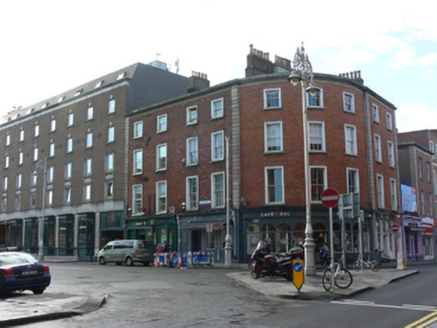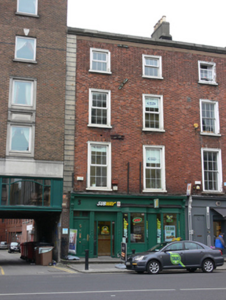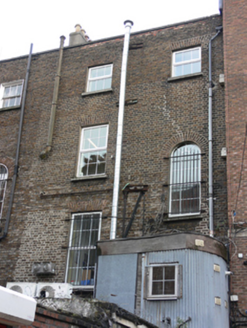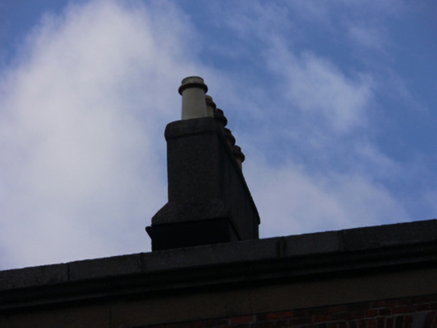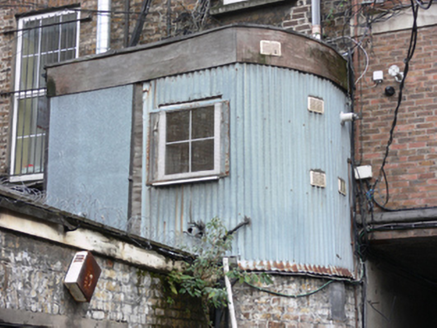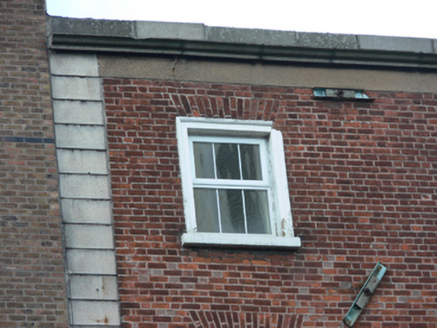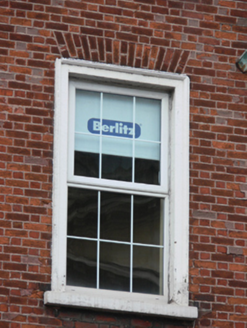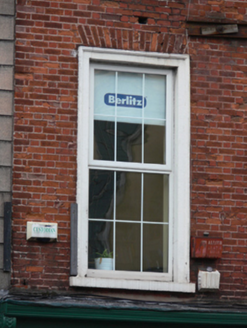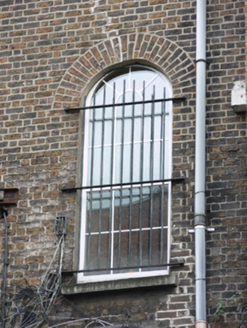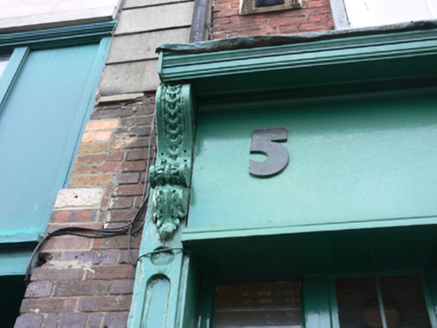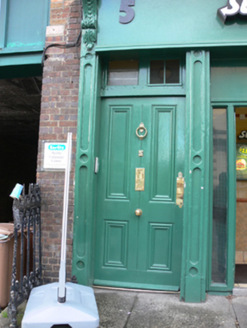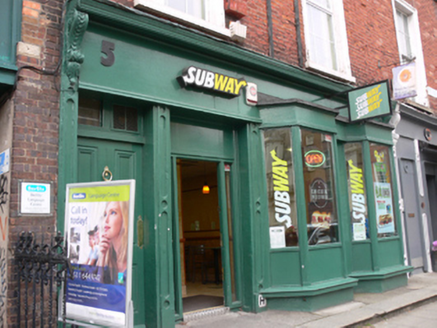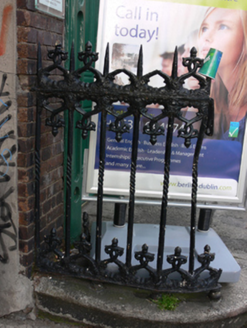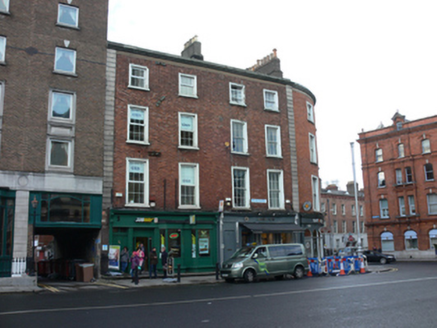Survey Data
Reg No
50020452
Rating
Regional
Categories of Special Interest
Architectural, Artistic, Social
Original Use
House
Historical Use
Shop/retail outlet
In Use As
Restaurant
Date
1830 - 1870
Coordinates
316571, 233789
Date Recorded
24/03/2015
Date Updated
--/--/--
Description
Terraced two-bay four-storey over basement former house, built c.1850, having shopfront to front (east) elevation and single-storey and two-storey extensions to rear (west) elevation, corrugated-iron to first floor of latter. Now in use as restaurant, with language school to upper floors. Flat roof concealed behind cut granite parapet, flat felt roof to extensions, rendered chimneystacks with clay pots. Carved granite cornice and render eaves course over red brick, laid in Flemish bond, to wall to front, having rusticated granite quoins. Yellow brick, laid in Flemish bond, to rear (west) elevation. Square-headed window openings with moulded masonry architraves, masonry sills, round-headed window opening to rear, having steel bars, replacement uPVC windows throughout. One timber framed casement window to rear extension. Shopfront comprising timber panelled pilasters, acanthus leaf moulding to scrolled console brackets, carved cornice over nameplate with recent lettering. Square-headed door and window openings having recent fittings. Square-headed door opening with timber awning windows to overlight, timber panelled door having brass fittings and nosed granite step with some cast-iron railings. Square-headed carriage arch opening to south. Replacement basement lights. Street fronted on Lincoln Place facing north-east to junction with Westland Row.
Appraisal
This building is part of a terrace of similar buildings which define the junction with Lincoln Place. The façade is framed by granite quoins and cornice, giving it a pleasing aspect, and creating an interesting tonal and textural contrast. The well-fired red brick of the front and the darker, more poorly fired brick used to the rear is an interesting indication of contemporary construction saving costs. The retention of features including timber sash windows and shopfront add to the historic character of both the building and the streetscape. Thom's Directory suggests that it was already in commercial use by 1862. The premises may well have been built with commercial use to the ground floor. Merrion Street Lower was built as an extension to the mid-eighteenth-century Merrion Street Upper, which was developed by the Fitzwilliam Estate and named after the second Viscount Fitzwilliam of Merrion.
